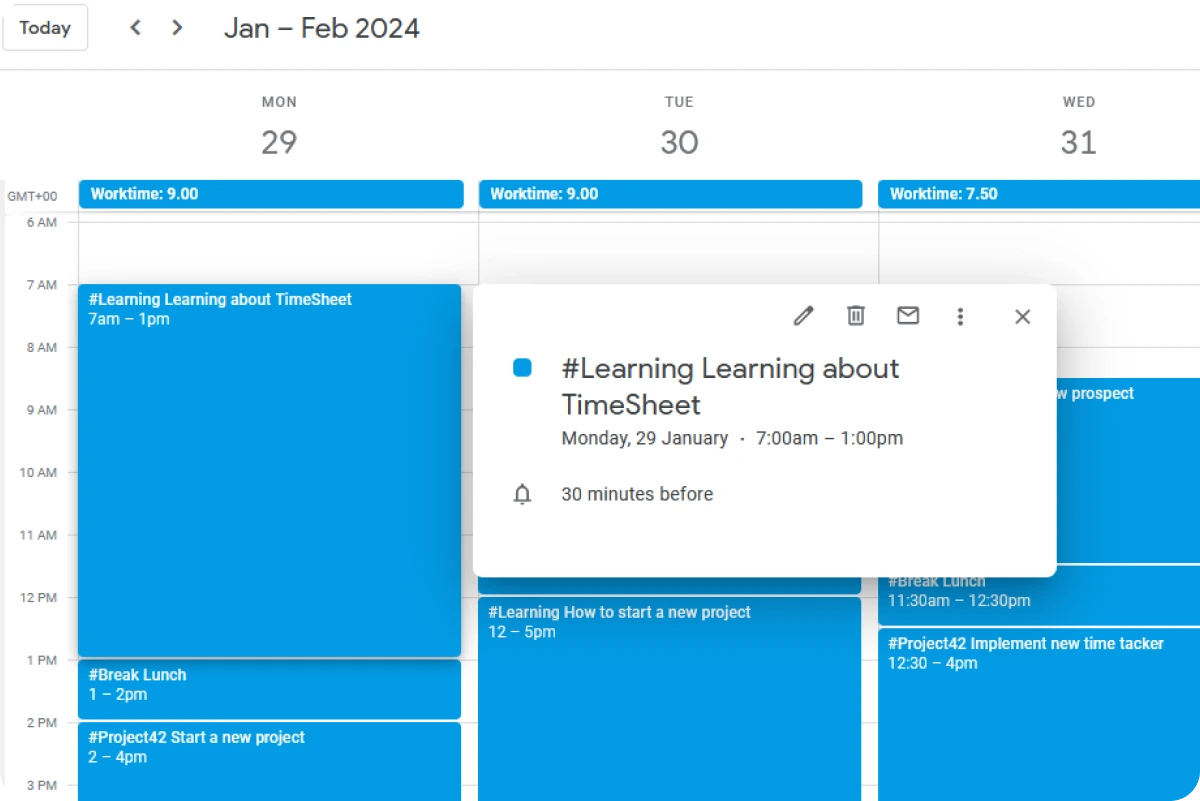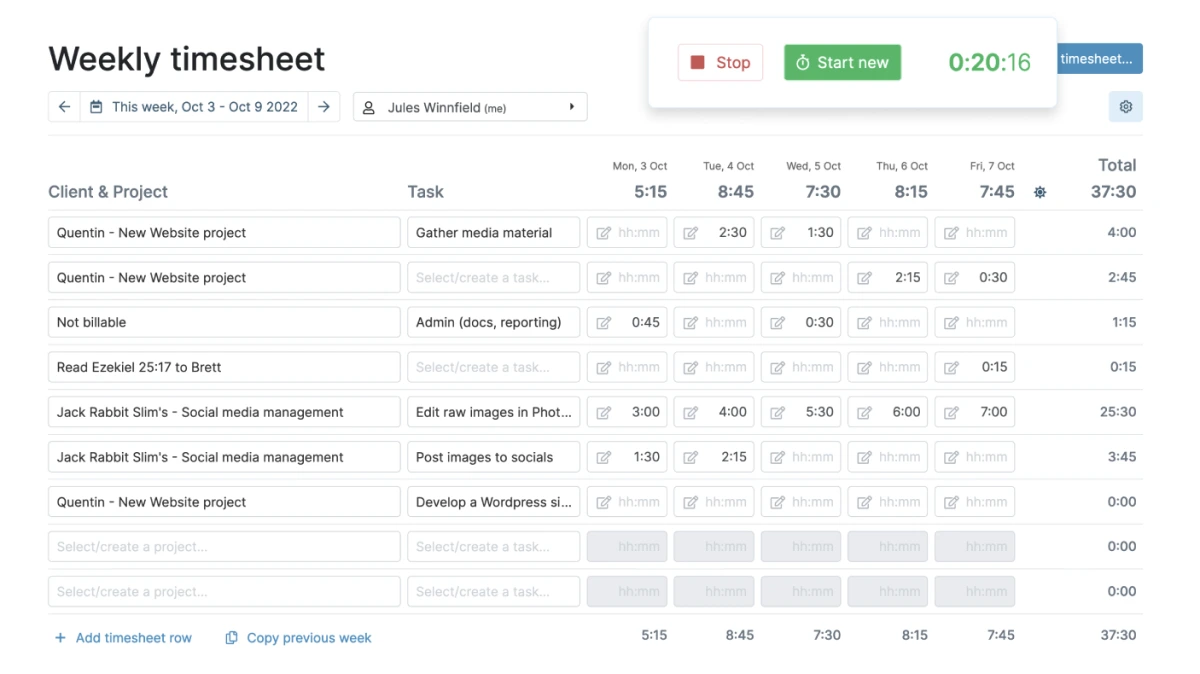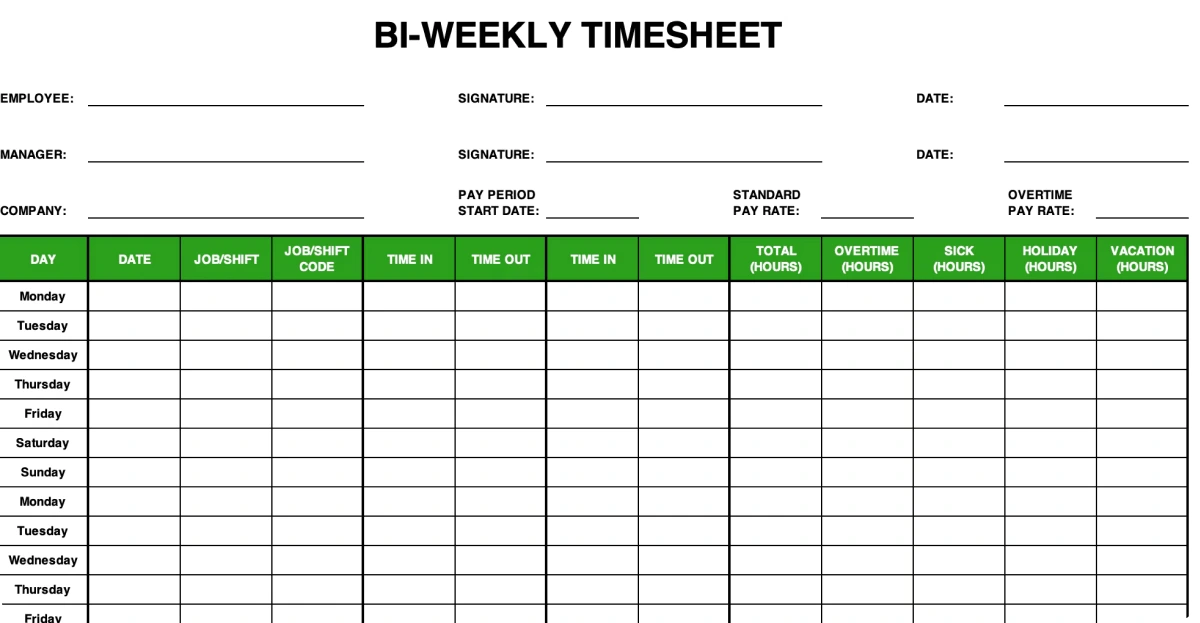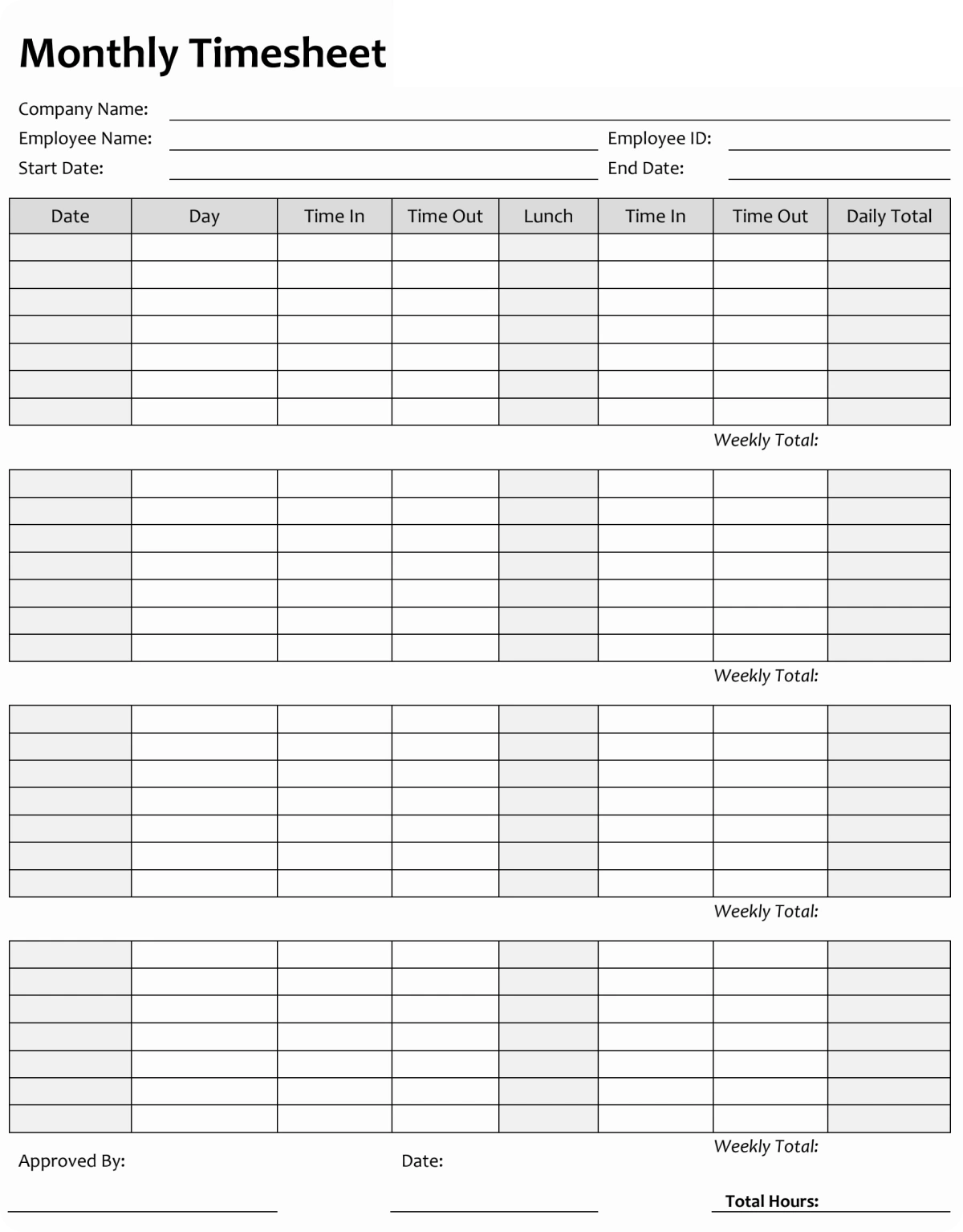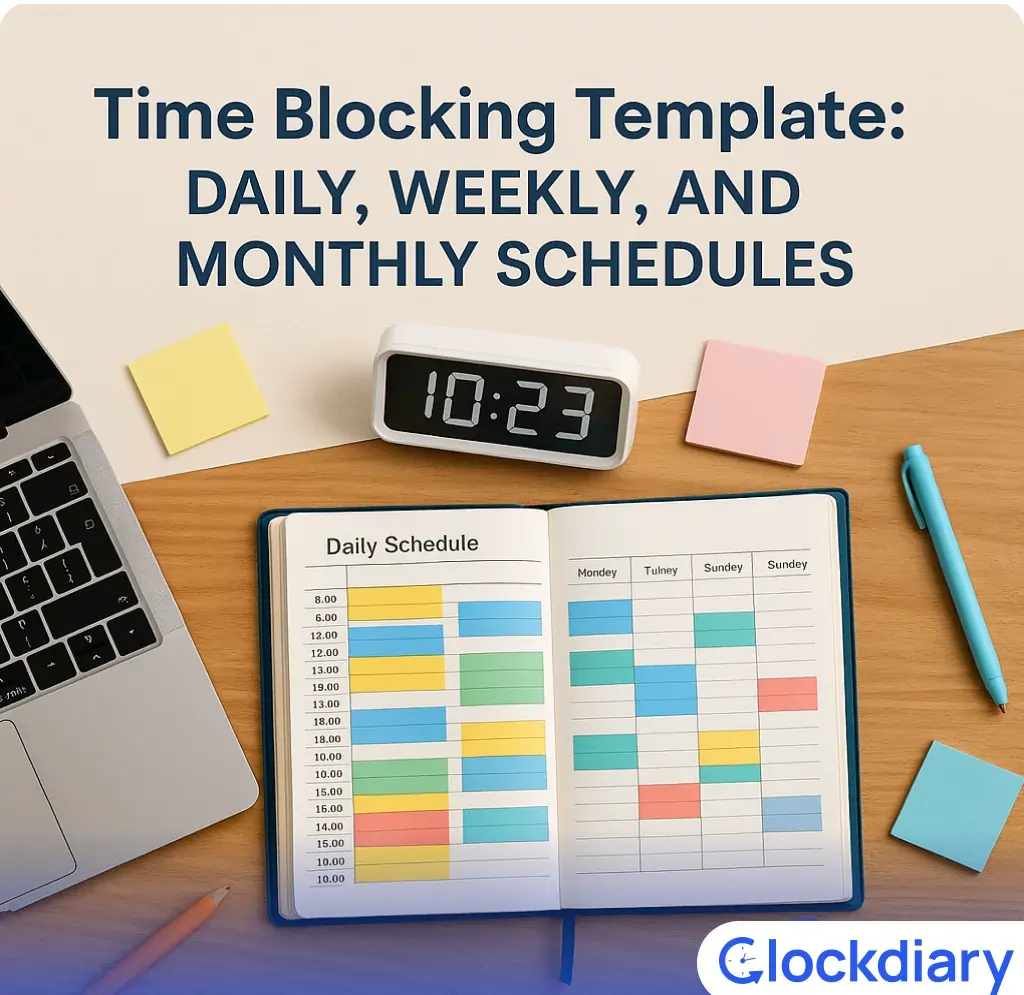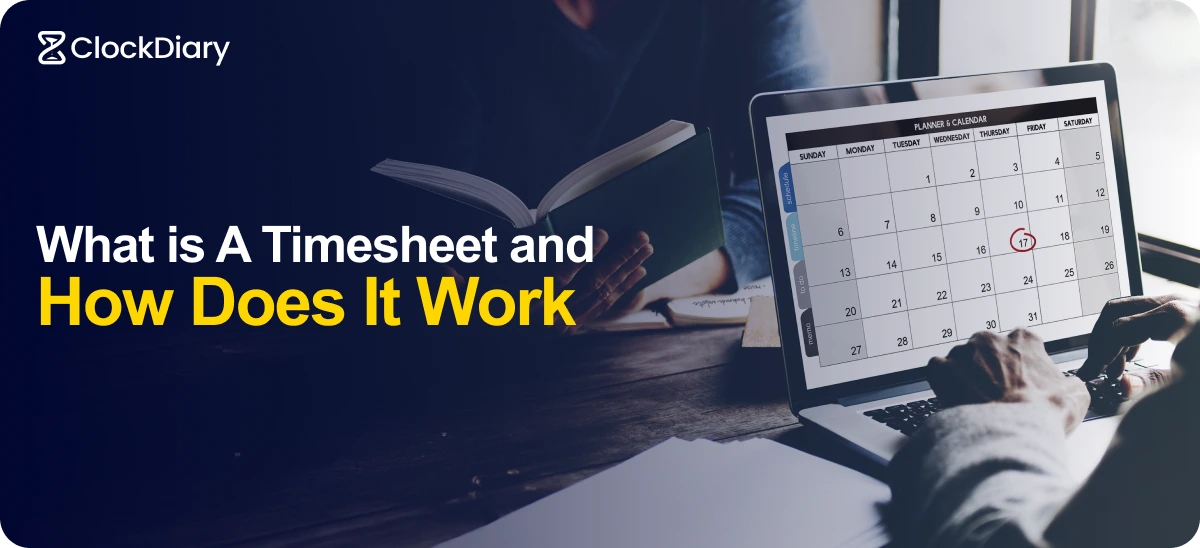
In 2025, timesheets are more than just a tool for tracking employee work hours—they are crucial for optimizing productivity, managing projects, and ensuring business success. Whether you’re in a small startup or a large enterprise, effective timesheet management helps keep everything on track, from payroll to project timelines.
| Quick Summary: A timesheet is a vital tool for tracking employee work hours, improving productivity, and ensuring accurate payroll. In this guide, we break down how timesheets work, their key components, and the differences between paper and digital formats. You’ll also discover how AI is transforming timesheet management, what features to look for in modern software, and expert tips to streamline your time tracking process. |
A timesheet provides a detailed record of time spent on tasks, projects, or clients, allowing managers to monitor progress, allocate resources efficiently, and ensure deadlines are met. With timesheets, businesses can keep their operations transparent, reduce inefficiencies, and promote accountability.
In today’s world, timesheets are no longer just about paper records. Businesses now rely on digital timesheet systems that simplify data collection, improve reporting accuracy, and minimize human error. Digital timesheet software, like Clockdiary, streamlines the process, making it easier to track time, generate reports, and ensure compliance with labor laws and company policies.
From payroll accuracy to effective project management, timesheets are essential for businesses aiming to optimize workforce productivity and create a well-organized, efficient work environment. By maintaining accurate time records, companies can ensure fair compensation for employees, improve team efficiency, and foster a culture of trust and transparency.
Key Elements of an Effective Timesheet: How to Track Employee Hours Accurately
Designing an effective timesheet is crucial for accurate time tracking, payroll processing, and project management. A well-designed timesheet helps businesses track work hours, manage employee productivity, and streamline billing processes. Below are the key elements that ensure your timesheet is effective and efficient:
- Employee Identity Information
Each timesheet should clearly identify the employee, including their name, employee ID, and department. This information is critical for accurate payroll and performance evaluations. By including these details, businesses can easily verify time worked, ensuring that employees are compensated fairly. - Detailed Activity Entries
Timesheets should include detailed information about the tasks or projects an employee is working on. This includes descriptions of the activities, project codes, and client names. This allows businesses to track productivity, manage project expenses, and ensure that work is allocated effectively. This detailed tracking can also be used for project cost analysis and resource management. - Accurate Time and Billing Information
It’s essential to record start and end times for each task or activity down to the minute. This section may also categorize work as billable or non-billable, particularly for client-based work. Accurate time tracking helps ensure that clients are billed appropriately, and employees are paid fairly. For businesses offering services, this provides transparency in the billing process. - Clear Date Range for Reporting
Defining a clear date range for the timesheet—whether it’s daily, weekly, bi-weekly, or monthly—is essential for effective reporting and payroll processing. By setting a specific time frame, managers can assess employee performance, track productivity trends, and ensure the business stays on top of deadlines and project timelines.
What is the Purpose of a Timesheet?
Timesheets are essential tools used across various industries to improve accountability, efficiency, and organization. By tracking work hours, tasks, and productivity, timesheets offer several benefits to both businesses and individuals. Here are the main purposes of timesheets and how they contribute to better management and outcomes in different sectors:
- Project Management: Keeping Projects on Track
In project management, timesheets help monitor the progress of tasks and ensure resource allocation is optimal. By tracking time spent on projects, managers can ensure that projects stay within budget and on schedule, while quickly identifying potential delays or inefficiencies. - Freelancers: Accurate Invoicing and Project Assessment
For freelancers, timesheets are crucial for tracking hours worked. They enable freelancers to generate accurate invoices, making sure clients are billed correctly. Timesheets also allow freelancers to assess project timelines and make informed decisions for future work. - Payroll Management: Ensuring Fair Compensation
For employers, timesheets simplify payroll management by providing a clear record of hours worked, making compensation calculations more accurate and efficient. This helps ensure employees are paid fairly and on time, avoiding any discrepancies or errors. - Billing: Fair and Transparent Client Charges
Businesses that offer billable services (such as consulting, legal, or marketing) use timesheets to track time spent on client projects. This ensures that clients are charged fairly based on actual hours worked. Proper billing also improves transparency, builds trust, and reduces the chance of disputes. - Account Management: Informed Financial Decisions
Timesheets offer valuable insights into labor costs and resource allocation, helping businesses make informed financial decisions. By understanding where time is spent, businesses can optimize costs, improve workflows, and allocate resources more effectively. - Workforce Productivity: Analyzing and Improving Efficiency
Timesheet data can help businesses track workforce productivity patterns. By identifying trends in how time is spent, companies can pinpoint areas for improvement, boost employee productivity, and streamline work processes for better efficiency. - Personal Time Tracking: Boosting Individual Productivity
For individuals, timesheets are useful for monitoring personal time, setting goals, and identifying areas where time can be better spent. Whether it’s for managing work tasks or personal projects, tracking time can help individuals improve their productivity and work-life balance. - Student Time Management: Balancing Academics and Extracurricular
Students can use timesheets to manage their time more effectively. By tracking study hours, class schedules, and extracurricular activities, students can stay organized, reduce stress, and improve time management skills. - Remote Work Time Monitoring: Ensuring Transparency for Remote Teams
With the rise of remote work, timesheets have become essential for monitoring offsite work hours. Timesheet software provides transparency, enabling employers to track remote employee hours and ensure that they’re meeting deadlines and staying productive while working from home. - Volunteer Hour Tracking: Aiding Nonprofits and Grant Reporting
Nonprofit organizations use timesheets to track volunteer hours, ensuring proper recognition of contributions and accurate reporting for grant applications. Timesheets provide valuable data for understanding volunteer involvement and managing projects effectively. - Legal and Compliance Requirements: Ensuring Adherence to Regulations
In many industries, businesses are required to track employee hours for regulatory compliance. Timesheets help companies adhere to labor laws, ensuring they are meeting local and federal regulations related to work hours, overtime, and employee benefits. - Performance Evaluation: Supporting Fair Assessments
Timesheets provide valuable data for performance evaluations, offering insights into how employees are managing their time. This helps businesses assess individual performance, identify areas for growth, and ensure fair performance reviews.
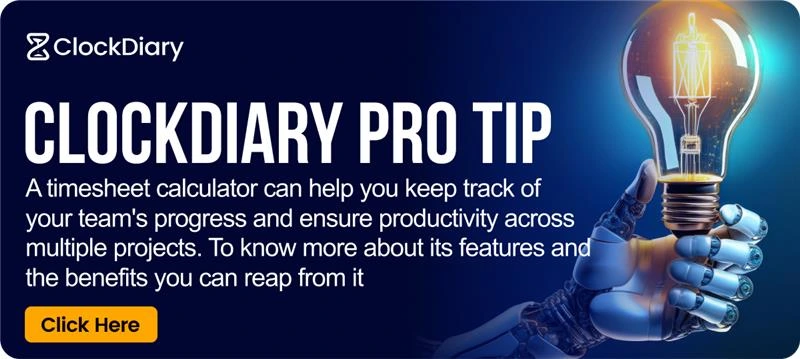
Digital vs. Paper Timesheets
The two most common types of timesheets used in the corporate world are paper and digital. Here’s a tabular comparison of how they differ from each other, which will help you choose the right one for your business:
| Feature | Digital Timesheets | Paper Timesheets |
| Accuracy | Digital timesheets automatically record time, reducing human errors and inaccuracies. | Prone to human error, manual entry mistakes, and potential miscalculations. |
| Efficiency | Since digital timesheets are quickly accessible from devices, they save time on data entry and submission | Slower to fill out, collect, and review, often leading to delayed approvals |
| Customization | Easily customizable with various fields, tags, and categories for specific project needs. | Limited customization. Changes require manual adjustments on each sheet. |
| Reporting | Digital timesheets generate instant reports, simplifying analysis for payroll and productivity tracking. | Requires manual compilation and analysis, making reporting a time-consuming process. |
| Data Retrieval | Quickly searchable, digital records allow instant access to past timesheets and data for auditing purposes. | Difficult to retrieve. They are stored physically, which can be lost or hard to organize |
| Productivity | Automation and integration with other tools enhance productivity, reducing admin work. | Time-consuming manual process reduces overall productivity. |
| Project Management | Real-time updates help managers monitor project progress and resource allocation effectively. | Updates are slow and require constant follow-up, reducing oversight efficiency. |
Thus, we wouldn’t be in the wrong to say that digital timesheets in the workplace provide top-notch accuracy, efficiency, and customization, improving productivity and project management capabilities. On the other hand, paper timesheets often involve delays, manual errors, and limited flexibility, making digital solutions the smarter choice for modern teams. If you are looking for an app or software that features digital timesheets for time-tracking, Clockdiary is certainly the one for you.
Types of Timesheets: Choosing the Best Format for Accurate Time Tracking
Timesheets come in different formats, each designed to meet the needs of specific industries and work environments. Choosing the right type of timesheet for your business can improve time tracking accuracy, payroll processing, and project management. Below are the most common types of timesheets used in businesses:
- Daily Timesheets: For Detailed Time Tracking
Daily timesheets capture work hours for each day, making them essential in industries requiring precise tracking of shifts, overtime, and project timelines, such as construction, retail, and manufacturing.
Why Use Daily Timesheets?
Daily timesheets enable businesses to manage shift schedules, track overtime, and ensure tasks are completed on time. They provide real-time insights into employee work patterns and project progress.
Statistic: According to Accelo, employees who record their time daily are 66% more accurate than those who track it weekly or less. This makes daily timesheet entry critical for accurate work hour tracking. - Weekly Timesheets: Common for Hourly Employees
Weekly timesheets track hours worked over a seven-day period, often used by hourly employees in hospitality, healthcare, and education sectors. This format provides a balance between granular time tracking and convenience.
Why Use Weekly Timesheets?
Weekly timesheets help streamline payroll by tracking weekly hours worked. They provide managers with insights into staff productivity and help ensure employees are paid accurately. - Bi-Weekly Timesheets: Simplifying Payroll Cycles
Bi-weekly timesheets track work hours over a two-week period and are typically used in industries that pay employees bi-weekly. This format is common in offices, service industries, and other roles that require more detailed tracking without the complexity of daily timesheets.
Why Use Bi-Weekly Timesheets?
Bi-weekly timesheets simplify payroll processing by consolidating time logs into two-week cycles. This helps ensure that employees are compensated accurately while reducing administrative overhead. - Monthly Timesheets: Ideal for Salaried Employees and Consulting Roles
Monthly timesheets are commonly used for salaried employees and individuals in management, consulting, or other positions that do not require detailed daily tracking. These timesheets provide an overview of time worked, helping businesses track project hours and analyze overall productivity.
Why Use Monthly Timesheets?
Monthly timesheets provide a clear overview of time spent on projects over the course of the month. This format is especially useful for reporting and budget management, allowing managers to assess employee productivity and project progress over time. - Timesheets for Salaried Workers
For salaried employees, timesheets typically track project time, PTO, and holiday hours rather than daily clock-ins. This is common in administrative roles, allowing organizations to measure productivity and project costs effectively without tracking specific hours worked daily.
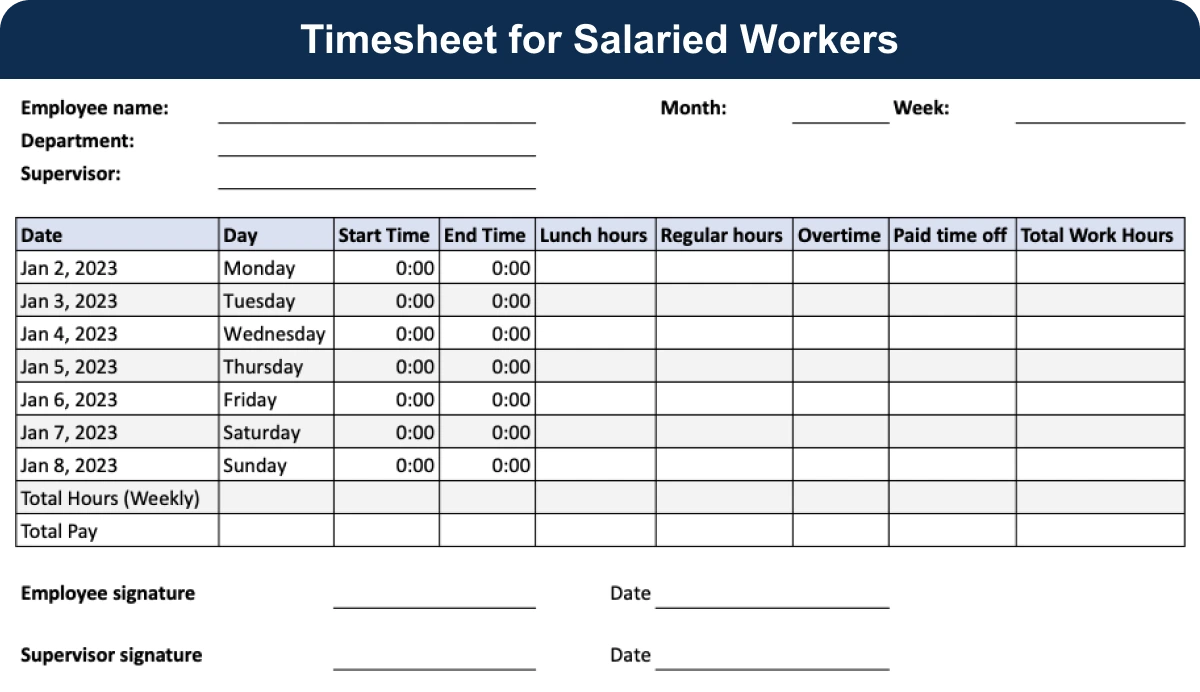
According to the U.S. Bureau of Labor Statistics, 11.3% of private businesses in the United States pay their employees monthly and thus follow a monthly timesheet. The most common pay period is biweekly, at 36.5%, followed by weekly, at 32.4%, and then semimonthly, at 19.8%. The number of pay periods in a year varies accordingly.
How Does a Timesheet Work?
As you well know, a timesheet is a simple yet powerful tool that tracks employee hours to ensure accurate payroll, project management, and productivity insights. Here’s how a typical timesheet workflow functions:
- Employees Log Their Time: Employees begin by entering their hours worked, either daily or weekly, into a timesheet system. This may involve logging start and end times, breaks, and even specific tasks or projects. Digital timesheets make this process faster and more accurate, often available through mobile or desktop apps.
- Manager Approves: Once submitted, the timesheet is reviewed by a manager or supervisor who verifies the recorded hours. This approval step helps ensure accuracy, accountability, and compliance with company policies. Managers may correct any discrepancies or request clarification if needed.
- Timesheet is Sent to Payroll: After approval, the timesheet is forwarded to the payroll department. At this stage, the hours worked are entered into the payroll system, thus setting the foundation for accurate wage calculation.
- Payroll is Calculated: Finally, payroll is calculated based on the recorded hours, pay rates, and any additional factors like overtime or bonuses. With the timesheet’s data, payroll processing becomes streamlined, minimizing errors and ensuring timely, accurate payments to employees. This efficient workflow ensures a smooth payroll cycle while promoting transparency and accountability as well.
How has AI Changed Timesheet Management?
AI has revolutionized timesheet management by introducing smart, efficient, and user-friendly solutions. Here’s how AI has redefined the traditional timesheet:
- Smart Timesheets: AI-powered timesheets can predict patterns and automate repetitive entries, making logging hours faster and more intuitive. For instance, smart timesheets can recognize frequently logged tasks and pre-fill information, saving users time and reducing human error.
- AI-powered Time Tracking: AI time tracking tools can automatically detect when employees start or stop working on tasks, reducing the need for manual input. These systems use contextual data, such as application usage and device activity, to determine active work time, making time tracking seamless and accurate.
- Automated Time Tracking: With AI, time tracking becomes more proactive. Automated tracking keeps an eye on employee activity without human intervention, making it ideal for remote work and freelance environments. Employees no longer have to start and stop timers manually, as the system detects task shifts and allocates time accordingly.
- Timesheet Chatbots: AI-powered chatbots simplify timesheet management by allowing employees to log time through simple text or voice commands. Chatbots can also remind employees to submit timesheets, answer questions, and provide insights on logged hours, making the timesheet process faster and more engaging.
Thus, it can be safely said that AI’s integration into timesheet management streamlines processes, enhances accuracy, and provides a user-friendly experience, thus transforming how businesses handle time tracking. Against this backdrop, we would like to point out that Clockdiary features automated time tracking, automatically recording employees’ work activity. Since there is no need for manual time tracking, the entire time-tracking process becomes that much more efficient.
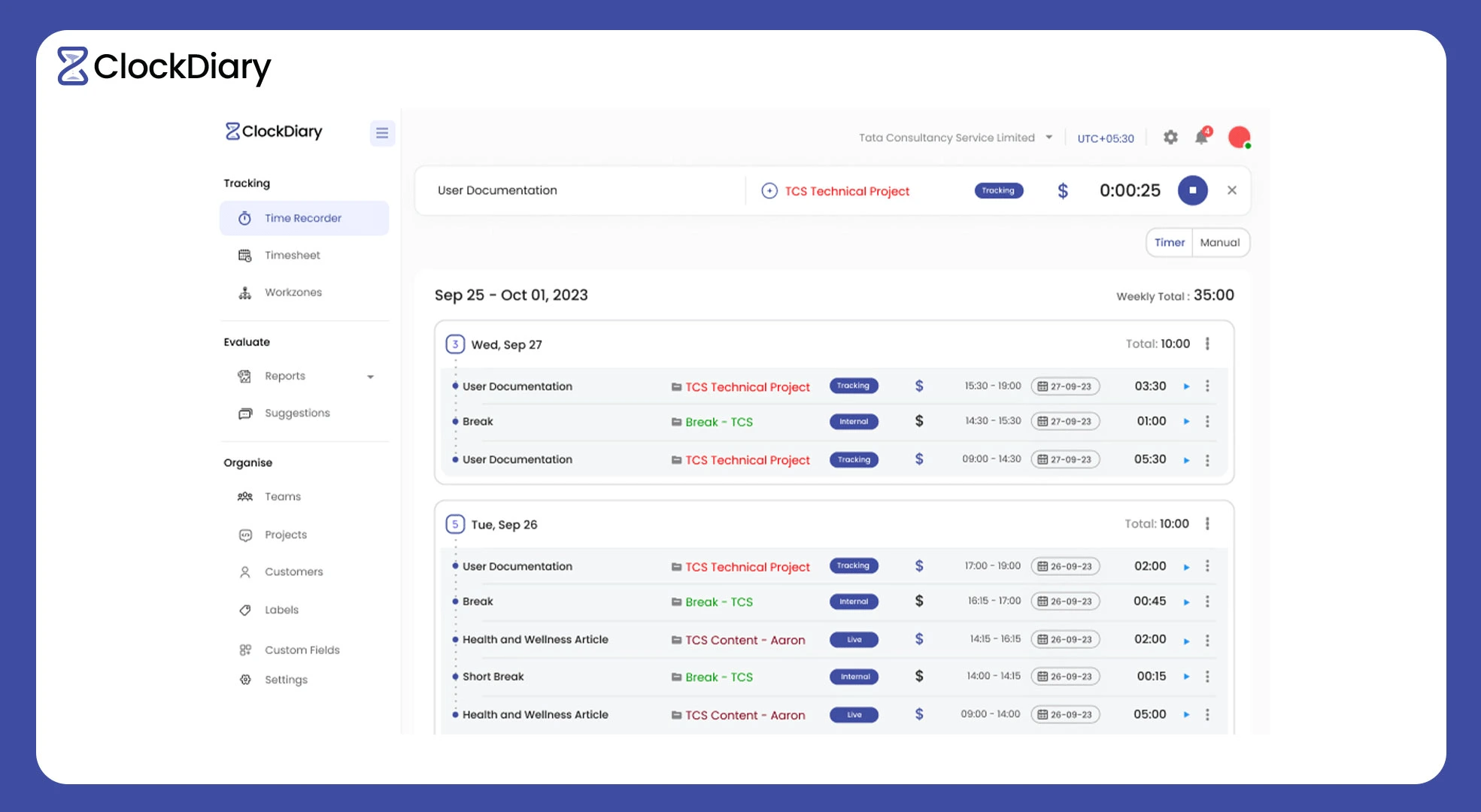
Must-Have Features of Timesheet Software
Modern timesheet software has features designed to streamline time tracking, boost productivity, and simplify management tasks. Here are some must-have features:
Time Tracking
Accurate time tracking is essential for recording work hours and managing projects efficiently. Clockdiary’s time-tracking feature allows users to log hours manually or use a timer, capturing work time effortlessly.
Activity Tracking
Activity tracking provides insights into tasks and helps monitor productivity. Clockdiary features an “Activity Tracker” that captures screenshots every 10 minutes to help users keep track of which tasks are being worked on, thereby improving project management and focus.
Reports and Analytics
Comprehensive reports and analytics are crucial for assessing time use, budgeting, and project progress. Clockdiary’s reporting tools help analyze time data, allowing users to generate custom reports for effective decision-making.
Productivity Calculation
Calculating productivity helps measure efficiency and optimize performance. By tracking time spent on individual projects, you can get valuable insights into task completion rates, helping teams and individuals improve over time.
Attendance Management
Tracking attendance is key for payroll and compliance. Clockdiary keeps track of work hours, breaks, overtime, and days worked, keeping employee records organized and accurate.
Technical Support
Reliable support ensures smooth software use. Clockdiary provides technical, phone, and priority email support to help users with troubleshooting, ensuring they get the most out of their timesheet software.
So, as you can well understand, with all these features, Clockdiary shines through as a great choice for efficient and organized time management.
7 Tips for Better Timesheet Management
Effective timesheet management is essential for accurate project tracking, payroll processing, and boosting workforce productivity. Follow these actionable tips to improve your timesheet practices and streamline operations:
- Use Automatic Timers
Automatic timers help track time accurately without manual input, reducing human error. Many timesheet tools, like Clockdiary, offer auto-timers to capture work hours effortlessly. - Use Pre-made Timesheet Templates
Pre-made templates simplify the timesheet entry process and ensure consistency. Templates are structured to capture key data, saving time and reducing mistakes during payroll processing. - Choose the Right Timesheet Software
Select timesheet software that is user-friendly and integrates seamlessly with your payroll and project management tools. Clockdiary offers real-time tracking and comprehensive reporting, making timesheet management easier. - Communicate the Importance of Time Tracking
Educate your team on the significance of accurate time tracking. When employees understand how timesheets impact project goals and payroll accuracy, they are more likely to prioritize timely submissions. - Encourage Daily Timesheet Entries
Encourage employees to enter their hours daily. This habit prevents missed hours and ensures accurate records for payroll and project planning. - Analyze Timesheet Data Regularly
Regularly review timesheet data to identify productivity patterns and project progress. This helps managers make informed decisions about resource allocation and identify bottlenecks early. - Ensure Accuracy with Double-Checking
Double-check timesheet entries before submission to minimize errors. Ensuring accuracy in time entries leads to reliable payroll and better project management outcome.
Conclusion
With technology growing at a never-seen-before scale and time becoming the most critical resource for a business, time tracking is certainly an important parameter for success, if not the most important. Clockdiary is one of the most sought-after timesheet apps that helps companies monitor employees’ workflow, manage client billing efficiently while ensuring projects are on track as well.
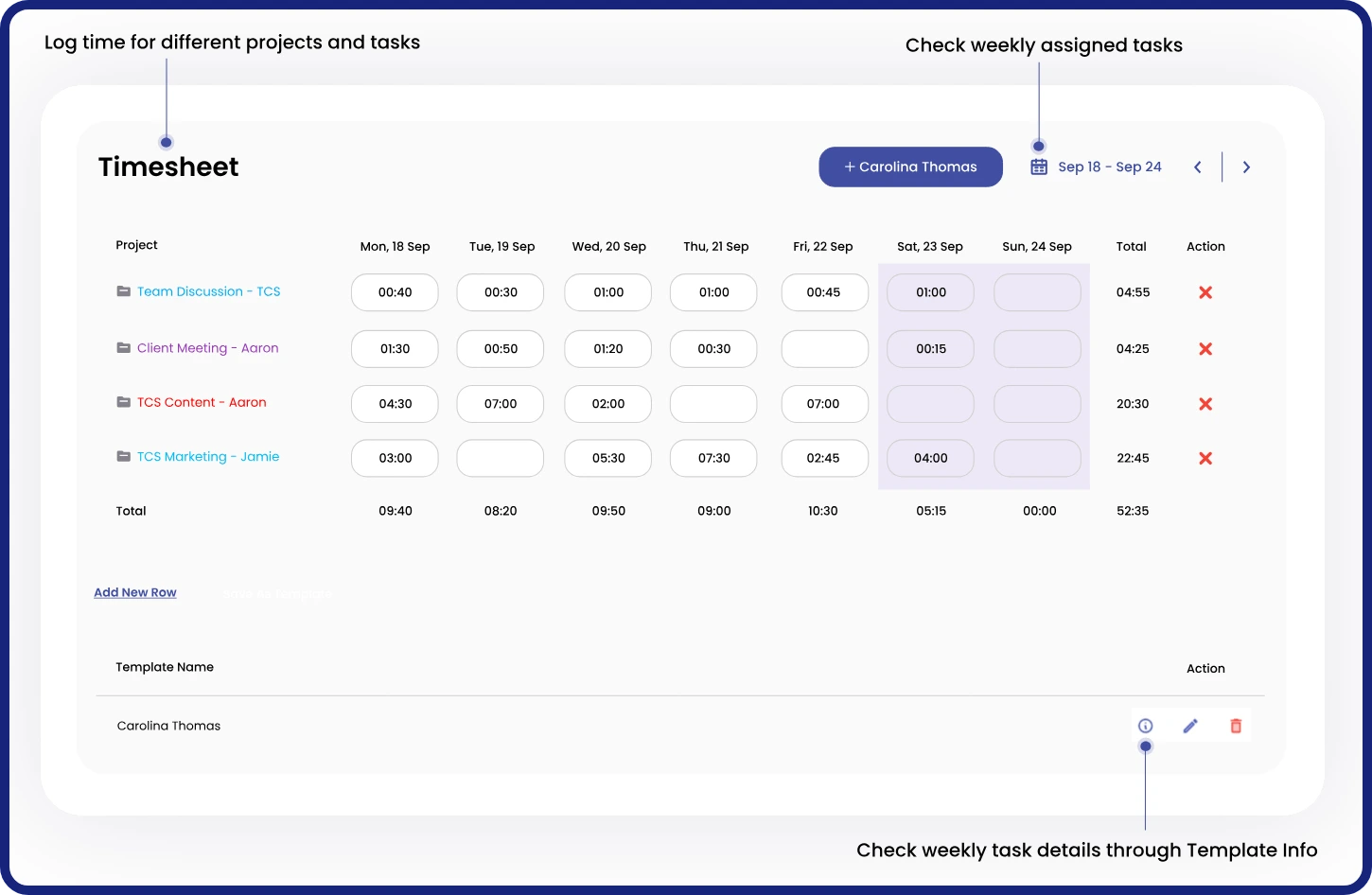
If you are on the hunt for good timesheet software that would provide detailed data and insights, get in touch with us by filling out this form and see the difference this technology brings to your workplace for yourself.

FAQs:
The objective of a timesheet is to accurately track and record hours worked by employees, leaves, accruals, and adjustments, enabling streamlined payroll processing and project management. It also helps monitor productivity and allocate resources effectively across tasks and projects.
A timecard records the start and end times of an employee’s shift, typically used for hourly wage calculations. A timesheet, however, captures the total hours worked, often broken down by project or task, providing a broader overview of time allocation for both payroll and productivity analysis.
To calculate timesheet hours, add up the hours worked each day and account for any breaks or overtime to get a total for the period. Clockdiary simplifies this with automatic timers, manual entry options, and real-time calculations, offering detailed reports to ensure accurate tracking and easy adjustments for breaks or overtime.

